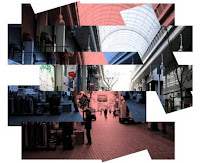Long back read that some sculptor spent his whole life making several sculptures for a large garden, sounds cool but what a waste of life, seriously! In case you paint a Monalisa or something than you might think its worthwhile, since you made a masterpiece for generations to come, but all of us ain't Vinchi.
With whatever capabilities we possess we can have two possible choices to make, one is to make a masterpiece to be remembered or to create abundance of art for yourself and for humanity. Abundance can give you instant opportunity to channelise your creative energy rather than waiting to make that one masterpiece for which you are waiting since last 10 years. And we are not talking about just fine arts, it can be anything, any form of creative affair which you love to be engaged in, you see even pattern of numbers is art for statistician, that's art for her!
So how will you create abundance when art is not your bread n butter and you are ever occupied with inexhaustible to-do list for your lifetime. Solution is to put your art on an autopilot mode. Making art anywhere everywhere, art which consumes least amount of time but is still an art to your satisfaction.
To keep your thinking wheel rotating an example can be like; take a complex peice of sculpture or object or take simply a junk, spill a bucket or mug of water in front of it, see the amazing reflection in water, now click or capture or paint or draw that reflection or the whole environment or simply observe and feel blessed to see your creation, additionally spill some paint in the water or add a mirror in the backdrop if you want or just do anything you like and your are ready with your art piece.
Idea is that it might take substantial time to create that very sculpture or art piece for example, whose reflection you are trying to capture but the moment you added thin film of water or a mirror for example the whole dynamics changed, now the whole setting is complex enough to qualify for an art, your personal art. See Master Artists used to paint pomegranate and guava to create classic masterpiece called “Still Life”, you simply cut them in half and one-click-capture the intricate pattern or just cut-n-shape them in cube and you are ready with your modern piece of art.
The best thing is that it’s you who have created this art, and you own this art; at least it gives you satisfaction to see your creativity manifested, in a blink of eye almost. This shortcut of art is just an example, because you were really running short of time to be devoted to art but you really wanted to create some, now you can think of infinite possibilities to dump the excuse that you could have created something only if you had time. This is how you beat the art!












